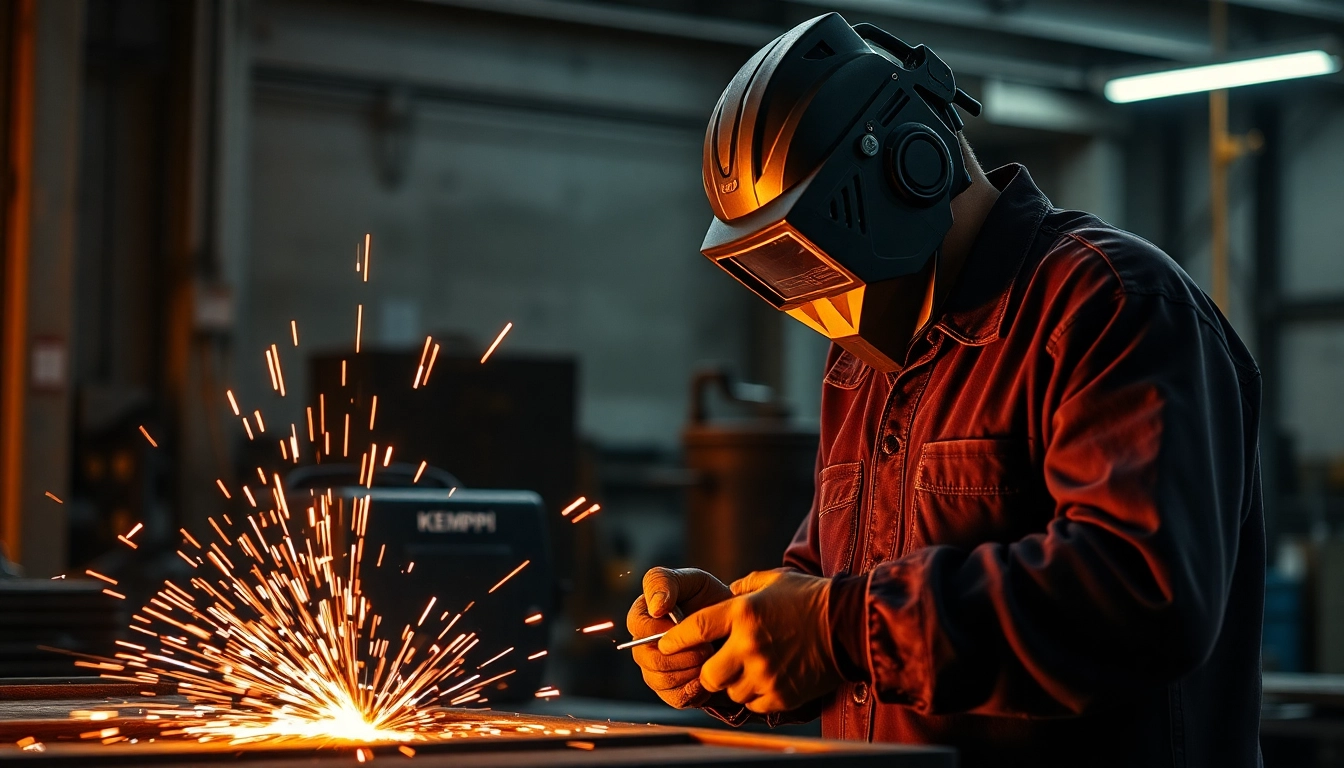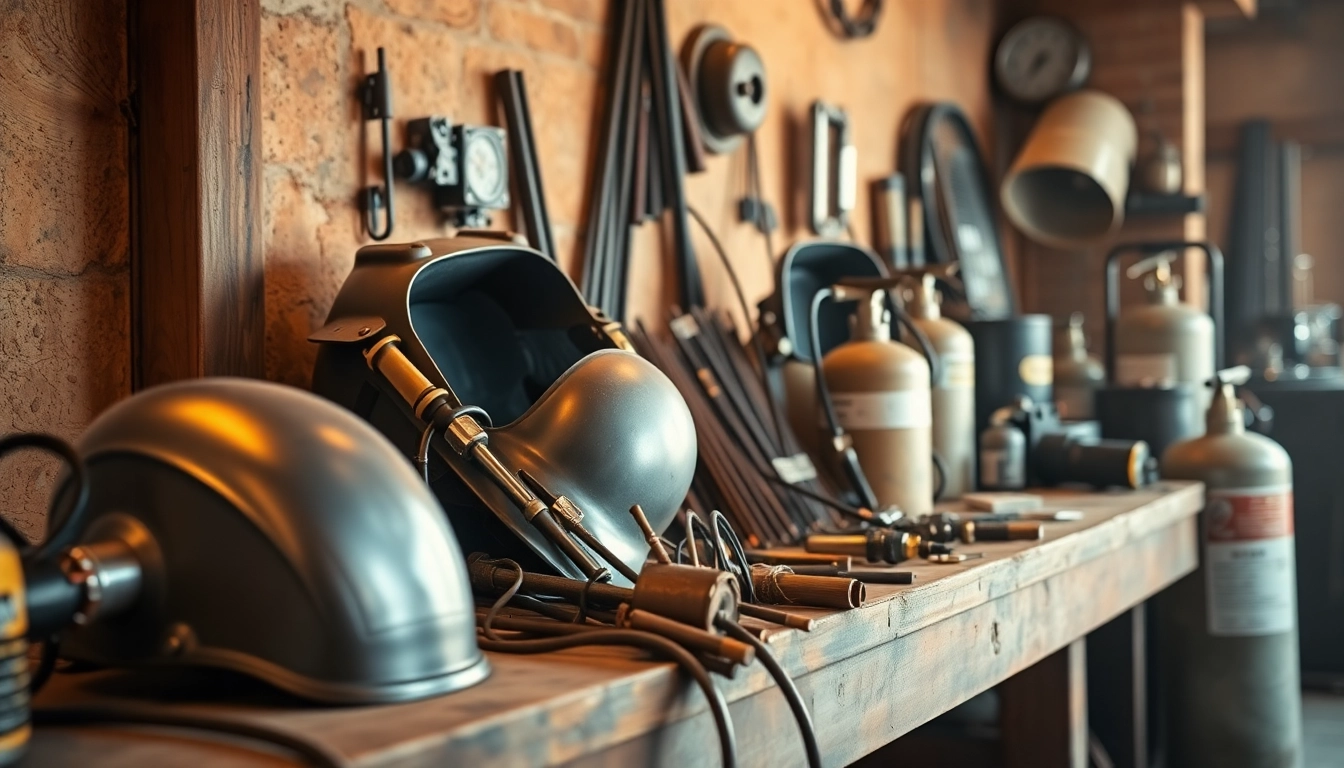Introduction to the Unimig Viper Series
In the world of welding, versatility and efficiency are paramount for both professionals and DIY enthusiasts. The unimig viper series emerges as a compelling solution, designed to cater to a variety of welding processes including MIG, TIG, and stick welding. With its robust performance and modern technology, the Viper series is engineered to meet the demanding needs of various welding tasks while ensuring ease of use and portability.
What is the Unimig Viper?
The Unimig Viper is a cutting-edge multi-process welding machine developed for a wide range of applications. It allows users to seamlessly switch between welding types, making it an ideal choice for workshops, industrial environments, and home projects. The Viper series showcases the latest technological advancements in welding equipment, promoting maximum efficiency and user-friendly operation. Its lightweight design and compact structure also make it suitable for onsite jobs, further enhancing its versatility.
Key Features of Unimig Viper Welders
The Unimig Viper series welders come packed with an array of features designed to enhance the welding experience:
- Multi-Process Capability: Each Unimig Viper model supports MIG, TIG, and stick welding, granting users the flexibility to tackle various materials and project types.
- Synergic Control: This feature allows for automatic adjustment of welding parameters based on the selected wire diameter and material thickness, simplifying the setup process.
- Portability: The lightweight design of the Viper models allows for easy transportation to any worksite without compromising on performance.
- Quality Build: Built to withstand the rigors of regular use, the Viper welders incorporate durable materials and components ensuring longevity and reliability.
- User-Friendly Interface: With intuitive controls and an easy-to-read display, even novice welders can achieve professional results.
Benefits of Multi-Process Welding Machines
Opting for a multi-process welder like the Unimig Viper offers several advantages:
- Cost-Effective: Instead of investing in multiple welding machines, a single multi-process welder covers various welding needs, significantly reducing capital expenditure.
- Space Efficiency: Compact and combined technologies reduce the need for additional equipment, conserving valuable workshop or garage space.
- Time-Saving: Quick switching between welding modes enables users to complete projects faster, which is especially beneficial for commercial applications.
- Skill Development: With the ability to practice different welding techniques, users can enhance their skills in multiple areas, leading to greater adaptability and opportunities.
Comparing Unimig Viper Models
The Unimig Viper series includes several models, each catering to unique user requirements and preferences. Understanding the differences among them helps potential buyers choose the best fit for their needs.
Unimig Viper 185 vs. Viper 195: A Side-by-Side Overview
When comparing the Unimig Viper 185 and Viper 195 models, it is essential to look at their specifications and intended uses:
| Feature | Viper 185 | Viper 195 |
|---|---|---|
| Welding Processes | MIG, TIG, Stick | MIG, TIG, Stick |
| Max Output | 185 Amps | 195 Amps |
| Weight | 15 kg | 16 kg |
| Voltage | 240V | 240V |
| Price | $999.00 | $1,299.00 |
The Viper 185 is ideal for home repairs and hobby projects, while the Viper 195 offers additional power suitable for more extensive industrial tasks or professional projects.
Choosing the Right Model for Your Needs
Choosing the appropriate Unimig Viper model depends on several factors, including:
- Project Type: For light-duty tasks, the Viper 185 suffices; however, for heavier applications or increased thickness of materials, the Viper 195 is preferable.
- Budget: Consider your budget constraints. While the Viper 195 is a bit pricier, it may provide the value necessary for users anticipating heavier workloads.
- User Experience: Beginners may find the simplicity of the Viper models beneficial, yet those with established skills might lean towards the additional features of the Viper 195.
Specifications and Performance Metrics
To maximize performance, understanding the specifications is crucial. Below are essential performance metrics for both models:
- Welding Current Range: The Viper 185 operates between 30-180 Amps, while the Viper 195 offers a range of 30-195 Amps.
- Wire Size Compatibility: Both models accept wire sizes ranging from 0.6mm to 1.0mm, ensuring versatility across different welding tasks.
- MIG Wire Spool Size: Options for 1kg and 5kg spools make it adaptable based on project requirements.
- Welding Thickness Range: The Viper 185 is equipped for material thicknesses between 3mm and 10mm, and the Viper 195 can handle slightly thicker materials up to 12mm.
Welding Techniques: MIG, TIG, and Stick
Understanding the various welding techniques available with the Unimig Viper series is essential for effective application.
Understanding MIG Welding with Unimig Viper
MIG (Metal Inert Gas) welding is one of the most common welding methods used in various industries. The Viper series simplifies the MIG welding process through its synergic settings:
The process involves:
- Utilizing a continuous wire feed, allowing for higher deposition rates and reducing the chances of defects.
- Employing a shielding gas to protect the weld from contamination.
- Using the welder’s intuitive interface to dial in the desired settings based on material thickness and type.
Common applications include automotive repair, metal fabrication, and DIY projects requiring robust joints and fast production times.
How to Effectively TIG Weld Using the Viper
TIG (Tungsten Inert Gas) welding is renowned for its precision and ability to produce clean welds. The Unimig Viper series accommodates this welding method with enhanced control and versatility:
Key considerations for effective TIG welding with the Viper include:
- Setting the Right Amperage: Based on material thickness, adjust the inverter settings to maintain control during the welding process.
- Filler Rod Selection: Choose the appropriate filler rod compatible with the base material to ensure strong bonds.
- Shielding Gas Flow Rate: Adequately set the gas flow rate to shield the weld area from contaminants, ensuring a smooth finish.
- Consistent Movement: Maintain a steady travel speed with a fill-in motion, eliminating gaps and ensuring uniformity.
Stick Welding: Tips for Beginners
Stick welding is often favored for its simplicity and effectiveness, particularly in fields requiring heavy-duty welding. The Viper models effectively tackle stick welding tasks by:
Tips for beginners include:
- Electrode Choice: Select the appropriate electrode based on the type of metal and the thickness to achieve optimal results.
- Electrode Angle: Maintain a 15-degree angle while welding to distribute heat evenly across the metal surface.
- Arc Length: Adjust the arc length based on the electrode diameter; too short may cause sticking, too long can result in contamination.
- Practice: Set aside time to practice welding on scrap materials before undertaking important projects, allowing for skill development.
Maintaining Your Unimig Viper Welder
Taking proper care of your Unimig Viper welder not only prolongs its life but also enhances performance. Regular maintenance ensures that the welder is ready to go when you need it.
Regular Maintenance Tips for Longevity
Implementing a consistent maintenance routine can prevent downtime and costly repairs:
- Clean the Welder: Periodically remove dust and debris from the internal components and exterior to prevent overheating and corrosion.
- Inspect Cables and Connections: Regularly check for wear and tear on cables, ensuring they are secure and free of damage.
- Replace Consumables: Keep an eye on the condition of gas nozzles, electrodes, and contact tips, and replace them when necessary to ensure a better welding experience.
- Test Settings: Periodically testing the welder settings can help identify any irregularities or performance issues before they escalate.
Troubleshooting Common Issues
Even with proper maintenance, issues can occasionally arise when using the Viper. Here are common problems and their corresponding solutions:
- Inconsistent Arc: This may be caused by a dirty electrode or incorrect settings. Clean the electrode and verify your settings.
- Excessive Spatter: Incorrect voltage or wire feed speed can produce excess spatter. Adjust these parameters to reduce spatter during welding.
- Weld Pool Troubles: If you encounter problems while maintaining a stable weld pool, check the travel speed and arc length simultaneously.
- Overheating: Ensure the welder does not become overly hot. Excessive use without breaks can lead to thermal overload. Let the machine cool down periodically.
Upgrading Your Welder Accessories
To get the most out of your Unimig Viper welder, consider enhancing your setup with essential accessories:
- Quality Welding Helmet: Invest in a helmet that offers proper eye protection and is comfortable for prolonged use.
- Welding Gloves: Use gloves designed for welding to protect your hands and enhance control during welding operations.
- Carts and Stands: A dedicated cart or stand can improve portability and ease of use, especially in busy professional environments.
- Welding Curtains: Deploy barriers or curtains to protect others from the harmful effects of welding glare and sparks.
Conclusion and User Insights
Choosing a welder from the Unimig Viper series can significantly enhance your welding capabilities, whether you are a hobbyist or a seasoned professional. Its combo of quality, versatility, and user-centric design makes the Viper an investment worth considering.
User Reviews and Testimonials
Many users rave about the Viper’s performance and reliability. Customers frequently highlight:
- The ease of switching between processes as one of the standout features, allowing for flexibility on complex jobs.
- The lightweight design facilitates easy transport without sacrificing power and functionality.
- Excellent user interfaces have been praised for simplifying the learning curve, especially for newcomers to welding.
Frequently Asked Questions about the Unimig Viper
Potential buyers often have questions regarding the Unimig Viper series:
- Can the Unimig Viper weld aluminum? Yes, the Unimig Viper can effectively weld aluminum, making it suitable for various metal types, although specific models may excel in this area.
- What thickness can the Viper 185 handle? The Viper 185 handles material thicknesses effectively between 3mm and 10mm, making it ideal for most home tasks.
- What are the differences between the Viper and Razor series? The Razor series typically offers higher output capacities and longer warranties than the Viper line, which caters more towards budget-conscious users or casual welders.
Final Thoughts on Multi-Process Welding
In conclusion, the Unimig Viper series is an excellent choice for those seeking a robust multi-process welder. It provides the flexibility, ease of use, and performance required for diverse welding applications while catering to different user levels. With the right features and necessary accessories, it can meet and exceed expectations in both DIY projects and professional trades.



